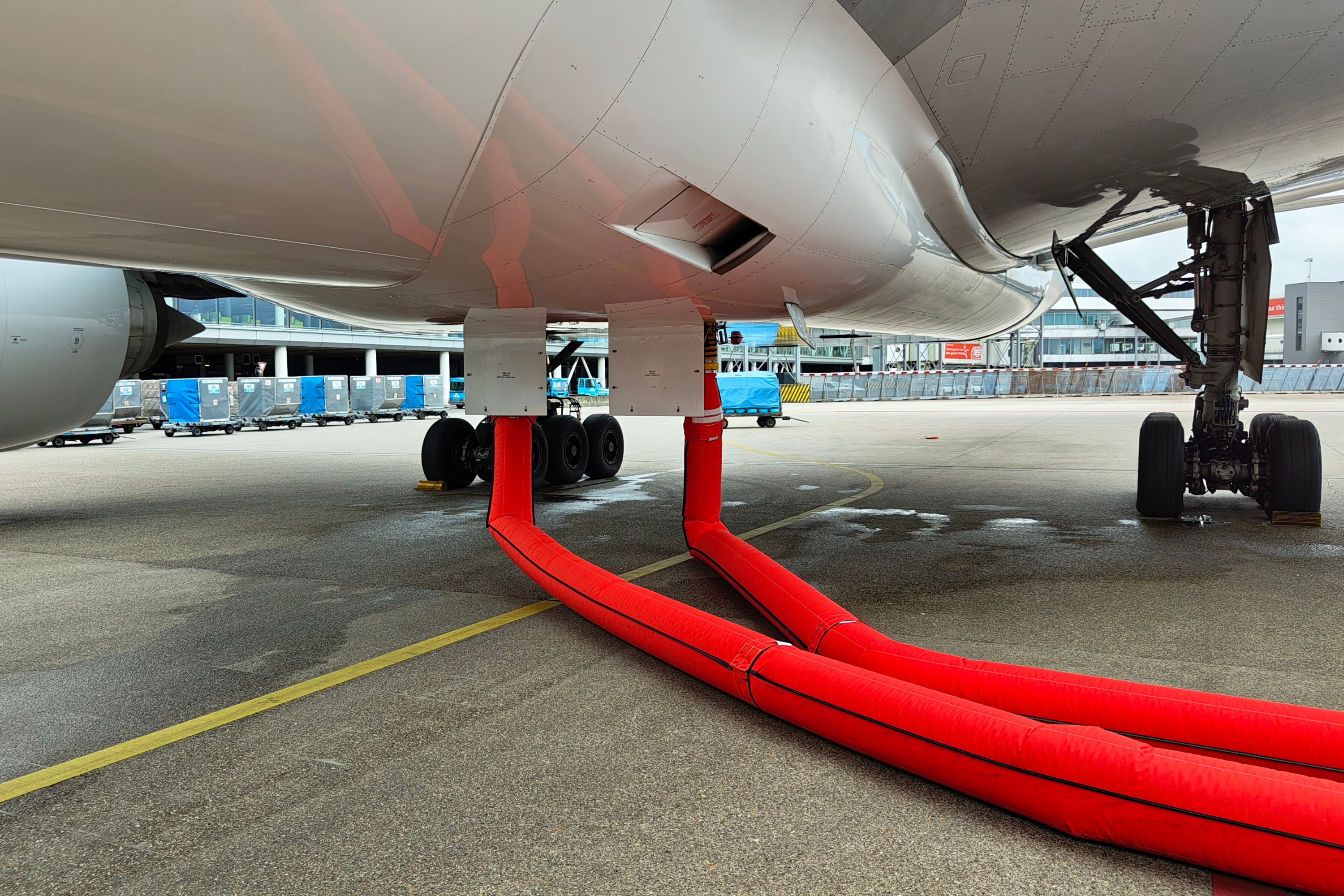
The Hague, 3 July 2025. The collaboration between Deerns and Amsterdam Airport Schiphol to create an emissions-free airport by 2030 is underway, with fixed Preconditioned Air (PCA) units being implemented at over 100 aircraft stands.
Schiphol has partnered with Deerns to design and integrate PCA units at 144 aircraft stands with the goal of achieving an emissions-free airport by 2030. This project significantly reduces emissions by allowing aircraft to receive fresh air without using their Auxiliary Power Units (APUs), which contribute to pollution and fine particulate matter at the apron.
" Eliminating APU use on the apron marks a major step toward more sustainable airport operations.
Schiphol will not only reduce emissions but also improve air quality for ground crews working in close proximity to aircraft.
Deerns has played a key role in this initiative, leveraging its expertise in innovative apron design and future-ready airports to create solutions that improve both operational efficiency and working conditions for ground personnel. Says Jacomijn van Ham, Project Manager at Deerns, “We are demonstrating that, even in a complex and operational environment, electrification and emissions reduction are both possible and practical.”
Phased Approach to PCA Implementation
The implementation process was carried out in two critical phases:
1. Concept Design Phase
Deerns analysed the impact of fixed PCA units on five existing stand types – connected Narrow Body, connected Wide Body, semi-connected Narrow Body, non-connected Narrow Body and non-connected Wide Body. Multiple PCA placement options were considered, each with its advantages and drawbacks. The client then selected the most suitable location for each stand type.
2. GAP Analysis
The selected stand types were then projected onto Schiphol’s 127 existing stands to assess the spatial, operational and electrical feasibility of implementation. This phase provided a clear roadmap for adapting each stand and also proposed follow up design phases where necessary.
Challenges in a High-Density Environment
Fitting PCA units into an already complex apron environment posed significant challenges. The units, measuring approximately 5m x 2.5m each, needed to be positioned strategically to avoid disrupting other airport operations such as ground handling, passenger movement and fuelling logistics.
“One of the biggest challenges was finding a way to integrate these relatively large PCA units within a tightly constrained environment, ensuring minimal interference with other operations,” explains Lester Meijs, Engineer at Deerns’ Apron Design Team. “This required close collaboration with Schiphol’s operational teams, handlers and infrastructure specialists to identify the best possible placement options.”
Seamless Coordination with Stakeholders
The success of this project was largely due to Deerns’ ability to work closely with various stakeholders, including Schiphol’s operational teams, ground handlers, IT specialists and electrical engineers. Regular meetings ensured that all perspectives were considered, and that the final design met the needs of all parties.
Javier Niño Martínez, Engineer at Deerns’ Apron Design Team, highlights the importance of collaboration: “One of the most rewarding aspects of this project was the level of coordination we achieved. Our open design approach allowed Schiphol to make informed decisions on placement and implementation while balancing operational efficiency.”
The Impact & Future of PCA Integration
While Schiphol is ahead of many other airports in implementing fixed PCA units, Deerns sees significant potential for applying the knowledge gained and lessons learned to similar projects elsewhere.
“We have shown that electrification is achievable even in existing airport infrastructure,” says van Ham.
" This knowledge can now be transferred to other airports looking to reduce emissions while maintaining efficient apron operations.
Paving the Way for more Sustainable Aprons Worldwide
Deerns is continuing to support the process by integrating PCA designs into broader apron electrification projects. This includes incorporating PCA units into new stand designs and ensuring compatibility with future infrastructure upgrades.
As airports worldwide look for more sustainable solutions, Schiphol’s pioneering work with Deerns sets a new benchmark for integrating preconditioned air and contributes to reducing emissions at the apron level.
